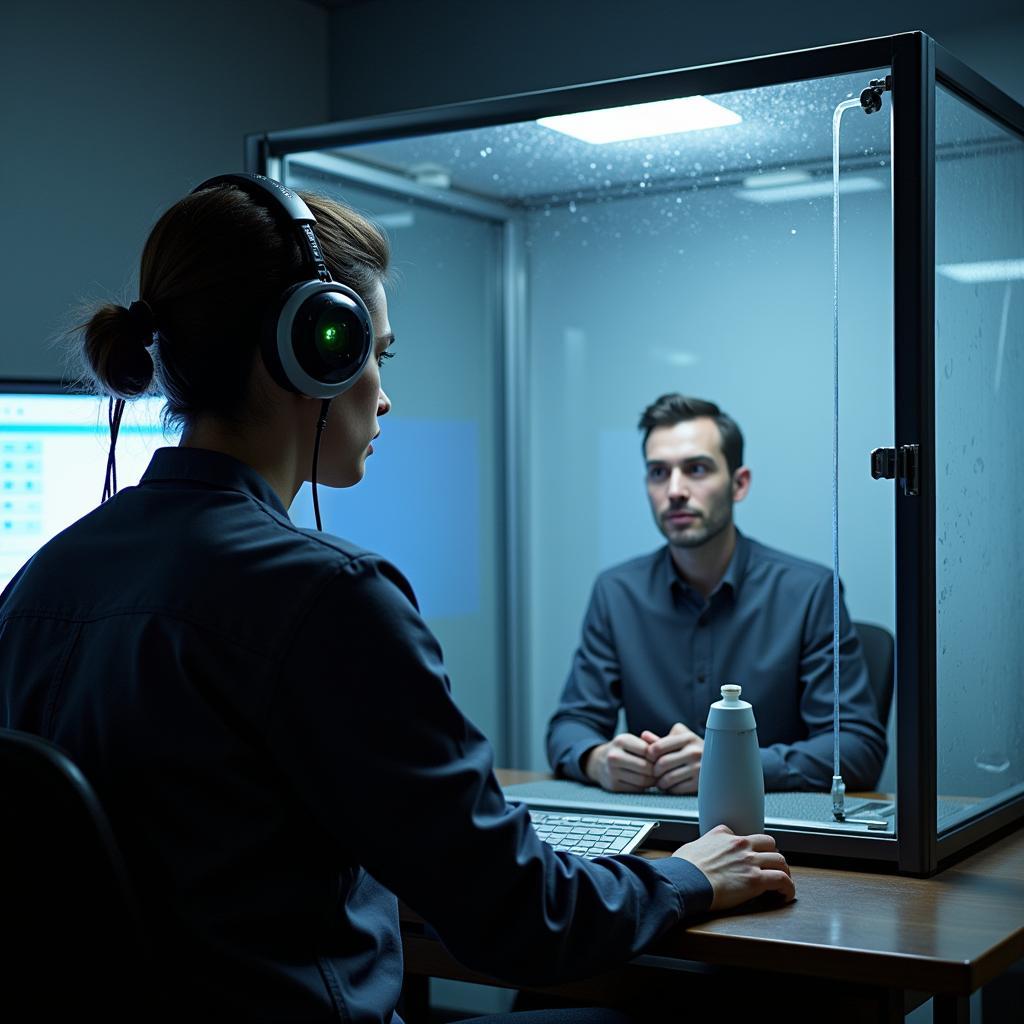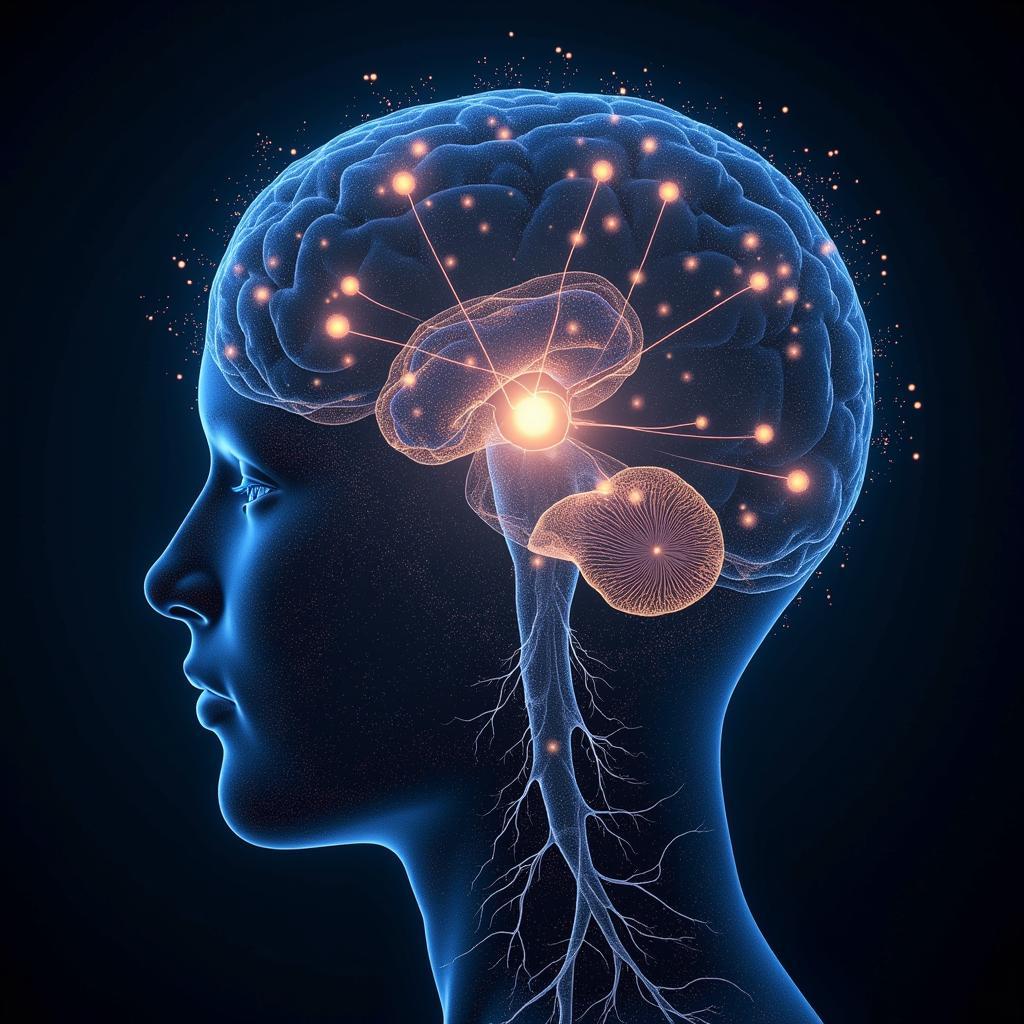A Researcher Looking For Evidence Of Extrasensory Perception (ESP) faces a challenging but fascinating task. The pursuit of proof for phenomena like telepathy, clairvoyance, and precognition has captivated scientists and the public alike for decades. But how does a researcher navigate the complexities of studying something seemingly beyond the realms of traditional science? This article delves into the methods, challenges, and ongoing quest for evidence in the world of ESP research. See our page about a researcher job description for more details about the professional field.
The Challenges of ESP Research
Studying ESP presents unique hurdles. One of the most significant is the difficulty in replicating results. Experiments that seem to initially demonstrate ESP often fail to produce the same outcome when repeated by other researchers. This lack of replicability raises questions about the validity of the initial findings and fuels skepticism within the scientific community. Another challenge lies in isolating ESP from other factors, such as chance, subconscious cues, or even fraud.
Controlling the Variables
Researchers must meticulously design experiments to eliminate any possibility of influence other than ESP. This involves rigorous controls, double-blind procedures, and statistical analysis to determine if results are statistically significant or simply due to chance. The elusive nature of ESP makes it difficult to pinpoint the exact conditions under which it might manifest, further complicating the research process.
 ESP Research Lab Setting
ESP Research Lab Setting
Methodologies in ESP Research
Despite the challenges, researchers employ various methods to investigate ESP. These include:
- Ganzfeld experiments: These involve sensory deprivation, where a participant attempts to receive information from a “sender” in another room.
- Remote viewing: Participants try to describe a distant location or object that is unknown to them.
- Psychokinesis (PK) studies: These explore the possibility of influencing physical objects with the mind, such as dice rolls or random number generators.
- Dream telepathy: This research investigates whether information can be transferred between individuals during dreams.
Analyzing the Data
Statistical analysis plays a crucial role in determining the significance of ESP research findings. Researchers use statistical tests to calculate the probability that the observed results could have occurred by chance. While statistically significant results can be intriguing, they do not necessarily prove the existence of ESP. Further research and replication are essential to build a stronger case.
The Ongoing Search for Evidence
While conclusive evidence remains elusive, the search for ESP continues. Researchers explore new methodologies, refine existing techniques, and delve deeper into the underlying mechanisms that might explain these phenomena. Some researchers are exploring potential links between ESP and quantum physics, consciousness studies, and neuroscience.
Future Directions
The future of ESP research lies in interdisciplinary collaboration, rigorous experimentation, and open-minded inquiry. By combining insights from different fields and embracing innovative approaches, researchers may eventually unravel the mysteries surrounding extrasensory perception. Learn more about research labs at Rutgers Research Labs. Investigate The Center for Advanced Research and Technology for potential opportunities in advanced scientific fields. For those interested in pursuing research opportunities, exploring Summer Research Assistant Jobs could be a valuable starting point. Finally, for inspiring research ideas, visit Scientific Research Project Ideas.
 Future of ESP Research
Future of ESP Research
Conclusion
A researcher looking for evidence of extrasensory perception embarks on a complex journey filled with challenges and uncertainties. While definitive proof remains elusive, the persistent pursuit of understanding ESP continues to drive scientific inquiry and spark the imagination. Further research, rigorous methodology, and interdisciplinary collaboration hold the key to unlocking the potential of the human mind and shedding light on the mysteries of extrasensory perception.
FAQs
- What is the most common method used in ESP research? Ganzfeld experiments and remote viewing are among the most commonly used methods.
- Has ESP been scientifically proven? No, there is no conclusive scientific evidence to prove the existence of ESP.
- What are some criticisms of ESP research? Criticisms include the lack of replicability, potential for bias, and the difficulty in controlling variables.
- What is the difference between telepathy and clairvoyance? Telepathy is the purported transfer of thoughts between minds, while clairvoyance is the ability to perceive information about distant objects or events.
- Why is ESP research controversial? The lack of consistent, replicable evidence makes ESP a controversial topic within the scientific community.
- Are there any practical applications of ESP? While unproven, some believe ESP could have potential applications in areas like intelligence gathering or communication.
- What is the role of statistics in ESP research? Statistical analysis helps determine if results are significant or simply due to chance.
Need Help with Your Research?
Contact us for support. Phone: 0904826292, Email: research@gmail.com Or visit us at: No. 31, Alley 142/7, P. Phú Viên, Bồ Đề, Long Biên, Hà Nội, Việt Nam. We have a 24/7 customer support team.